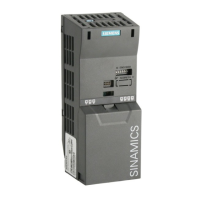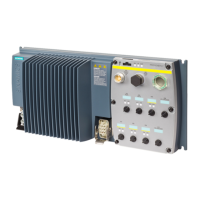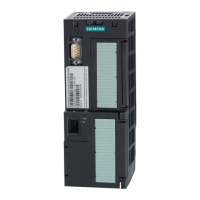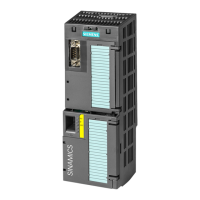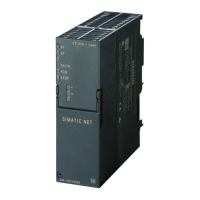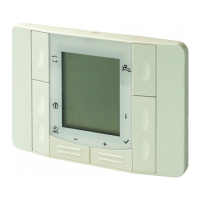Functions
8.18 Fail-safe functions
Control Units CU240S
Operating Instructions, 11/2006, A5E00766042B AA
8-105
1. The minimum monitoring speed tolerance p9691 should be set to
P9691 ≥ 1.15 ∙ P9690 + ∆F
slip
thus defining the minimum frequency tolerance as
∆F = P9691 - P9690 - ∆F
slip
Where ∆F
slip
is given as
∆F
slip
= P0330∙ r0310 / 100%
This prevents sporadic trips caused by measurement inaccuracies and additional slip
compensation. Note that according to the above formula, P9691 must be set, even if SLS
is not parameterised.
2. The resulting frequency tolerance ∆Fhigh due to the minimum frequency tolerance at high
frequencies is then given as
∆F
high
≥ 0.15 ∙ F
max
- ∆F
where Fmax defines the maximum process frequency at initiation of SLS or SS1.
3. The resulting frequency tolerance ∆ Flow due to the minimum frequency tolerance at low
frequencies is then given as
˂)
ORZ
싩
P
˂)
'
where the gradient m is defined as
P
3
The denominator D in the above formula is calculated as follows:
SLS parameterised: D = 2 ∙ P9690
SS1 parameterised: D = 2 ∙ P9682
SLS and SS1 parameterised: D = 2 ∙ min [P9682, P9690]
4. The valid delay ∆F
delay
is then given as maximum of
∆F
delay
= max [∆F
low
, ∆F
high
]
5. Finally the minimum braking ramp delay can be calculated as
3
싩
˂)
GHOD\
P
The safe frequency envelope results from a time delay (p9680) in t-direction and an
additional frequency tolerance ∆F (caused by measurement inaccuracies) and ∆F
slip
(caused
by slipcompensation) in F-direction.
Fault reaction time
An LSTO is always triggered immediately after the parameterised safe envelope frequency is
exceeded. However, note that the actual frequency may deviate (is usually higher) from the
set point frequency due to normal operating states (slip compensation, PID, etc.) or internal
drive faults.
Therefore, as the envelope starting frequency is related to the actual frequency the
parameterised envelope may be shifted as show in the next figure.

